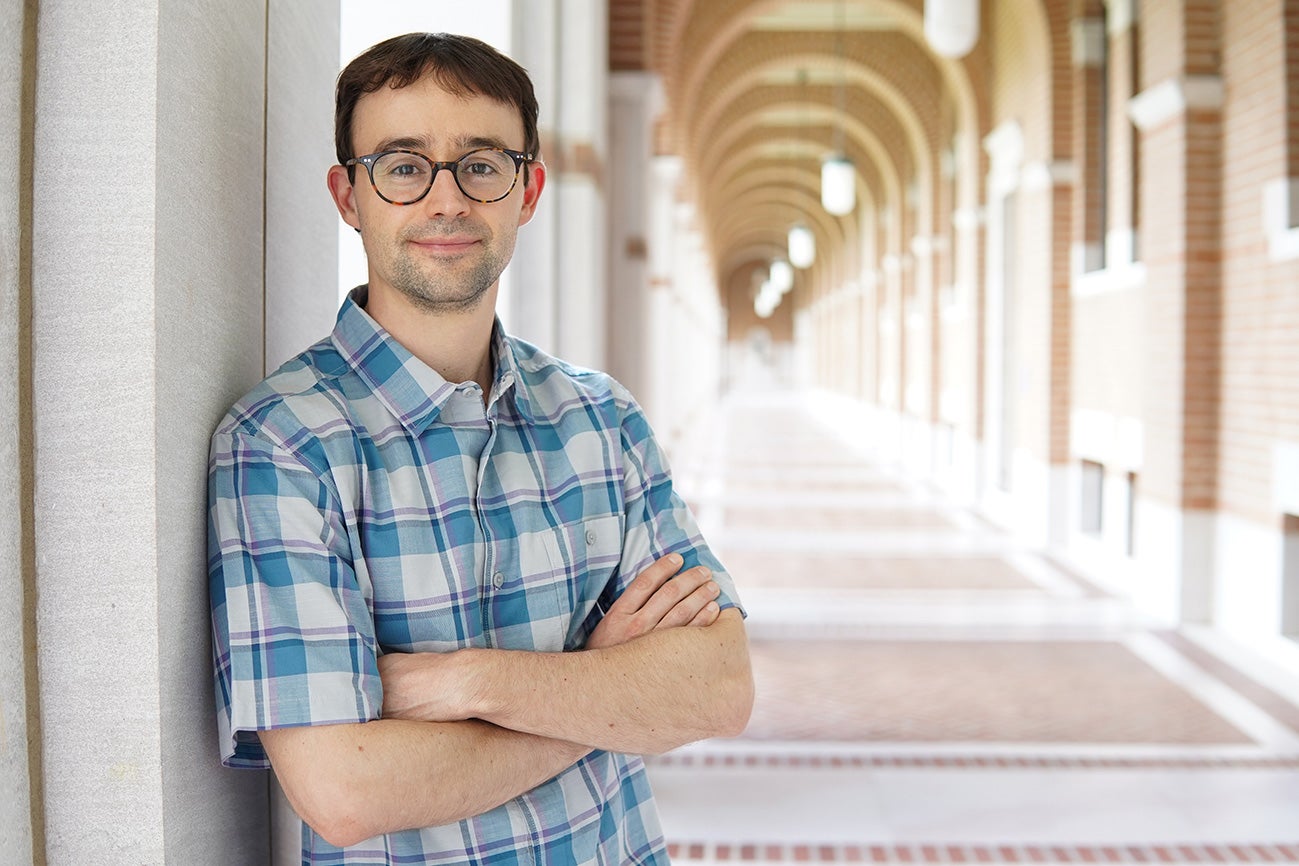In his first year at Rice University, Assistant Professor of Electrical and Computer Engineering Kevin Slagle was awarded a grant from the Welch Foundation to develop better computer algorithms tailored to simulating quantum chemistry dynamics.
Slagle said, “With this grant, I hope to solve or approximately solve the following problem on a computer: given the initial state of a bunch of electrons and nuclei, calculate the state of those electrons and nuclei at a future time. Solving this problem is often extremely challenging, but it's useful for predicting chemical reactions.”
To illustrate the problem, he suggested an analogy of predicting the trajectory of multiple bouncing balls that are falling due to gravity while bouncing off each other. Simulating the balls’ trajectories can be done on a computer, given their initial positions and velocities and repeatedly calculating the forces acting on the balls at a given time. Using this model, the position and velocity of all the balls can be calculated for a small time step in the future – a type of classical dynamics simulation.
“Simulating quantum dynamics is much harder,” said Slagle. “Instead of simply keeping track of positions and velocities, we must instead store the quantum wavefunction ψ(t) on a computer. The wavefunction says what the amplitude is for the particles (i.e., electrons and nuclei) to be at some positions. The square of the amplitude is the probability that the particles will be found in those positions if their positions are measured. Schrodinger's equation then predicts how the wavefunction changes over time.
The challenge is that for classical dynamics, we just had to keep track of 6 numbers for each ball: 3 numbers for its position and 3 for its velocity. If there are N balls, then the computer only needs to store 6N numbers. In quantum dynamics, we must keep track of the wavefunction, which is a function that maps 3N numbers (which specify the positions of N particles) to a number (the amplitude). Storing such a function requires a huge amount of data, which comes at a high cost.
The Slagle research team considered different pictures of quantum dynamics as they pondered the huge data problem. Pictures of quantum dynamics are not actual images, but ways to ‘do the math’ to account for quantum systems changing over time. The simplest picture, Schrodinger’s picture, contains a wavefunction ψ(t) that evolves in time.
Slagle said, “We recently discovered a new picture that associates a different ‘local wavefunction’ to each particle, whose dynamics depend only on the local wavefunctions of nearby particles. Our algorithm becomes more efficient because the local wavefunctions no longer have to accurately describe the information of all the particles in the system, only those nearby.”
Slagle’s quantum chemistry dynamics research is a good match for the Welch Foundation, one of the United States’ largest private funding sources for fundamental chemical research at universities, colleges, and other educational institutions in Texas.

